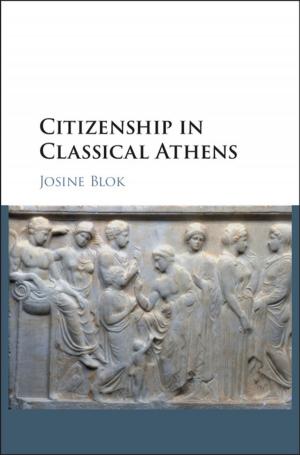Authority and Identity in Medieval Islamic Historiography
Persian Histories from the Peripheries
Nonfiction, History, Middle East, Social & Cultural Studies, Social Science| Author: | Mimi Hanaoka | ISBN: | 9781316784280 |
| Publisher: | Cambridge University Press | Publication: | September 9, 2016 |
| Imprint: | Cambridge University Press | Language: | English |
| Author: | Mimi Hanaoka |
| ISBN: | 9781316784280 |
| Publisher: | Cambridge University Press |
| Publication: | September 9, 2016 |
| Imprint: | Cambridge University Press |
| Language: | English |
Intriguing dreams, improbable myths, fanciful genealogies, and suspect etymologies. These were all key elements of the historical texts composed by scholars and bureaucrats on the peripheries of Islamic empires between the tenth and fifteenth centuries. But how are historians to interpret such narratives? And what can these more literary histories tell us about the people who wrote them and the times in which they lived? In this book, Mimi Hanaoka offers an innovative, interdisciplinary method of approaching these sorts of local histories from the Persianate world. By paying attention to the purpose and intention behind a text's creation, her book highlights the preoccupation with authority to rule and legitimacy within disparate regional, provincial, ethnic, sectarian, ideological and professional communities. By reading these texts in such a way, Hanaoka transforms the literary patterns of these fantastic histories into rich sources of information about identity, rhetoric, authority, legitimacy, and centre-periphery relations.
Intriguing dreams, improbable myths, fanciful genealogies, and suspect etymologies. These were all key elements of the historical texts composed by scholars and bureaucrats on the peripheries of Islamic empires between the tenth and fifteenth centuries. But how are historians to interpret such narratives? And what can these more literary histories tell us about the people who wrote them and the times in which they lived? In this book, Mimi Hanaoka offers an innovative, interdisciplinary method of approaching these sorts of local histories from the Persianate world. By paying attention to the purpose and intention behind a text's creation, her book highlights the preoccupation with authority to rule and legitimacy within disparate regional, provincial, ethnic, sectarian, ideological and professional communities. By reading these texts in such a way, Hanaoka transforms the literary patterns of these fantastic histories into rich sources of information about identity, rhetoric, authority, legitimacy, and centre-periphery relations.















